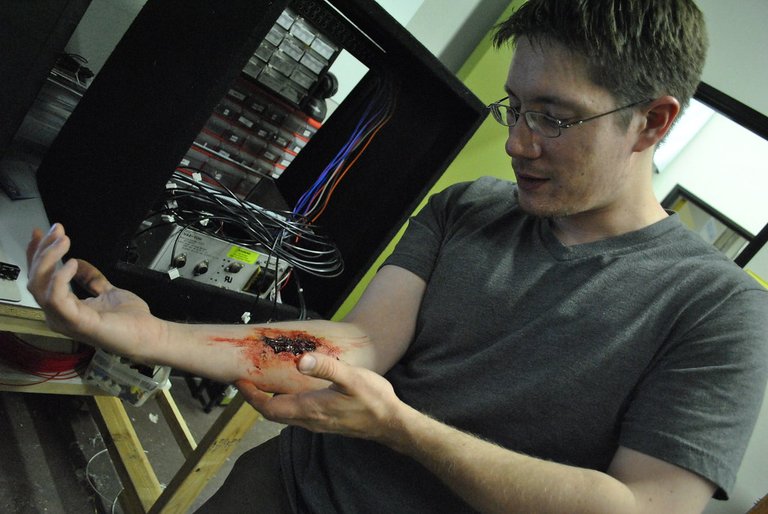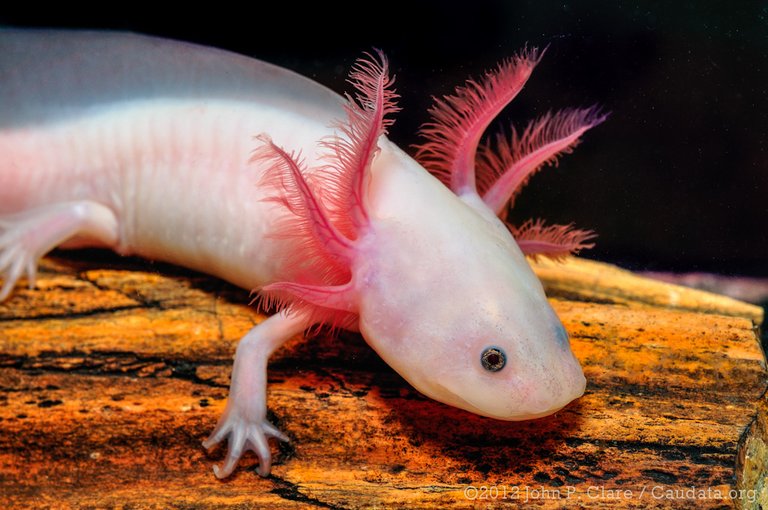Science -: You Might Be Able to Regrow Your Body Parts Soon
Unlike those animations and comic books of Wolverine and Deadpool, humans have not been able to have a full regeneration of their body part, although we have been able to create scar tissues on wounds and in case you do not know how that works, let me quickly explain it to you.
The process of healing from wounds, is very simple in humans. When we have a cut, the damage cell sends signals to the immune system which leads to immune cells coming to the rescue. Platelets rush to the location of the wound to clot the opening and the clot is bound by fibrin. When this is done, macrophages rush down to the region so as to attack whatever foreign bodies are got into the body through the cut or opening. When macrophages are done with their job, fibroblasts rebuild the wounded area with collagen and then keratinocytes are also a part of the job making the skin flexible compared to the rigid collagen used by the fibroblast.
Talking about regeneration, this happens in our blood cells and neurons in our brains let's not also forget our liver. There are also cases where young children could regrow the tip of their fingers as a result of somatic stem cells but this isn't common. At the mention of stem cells, let me quickly talk about the second type of stem cells aside somatic stem cell which is embryonic stem cell which is found present between 4 to 5 days after fertilization. This cell can form different types of cells forming different type of parts while somatic stem cells can only form specific cells.
While humans cannot regenerate, there are different animals with regenerative abilities. A good example is a Salamander known as Axolotls salamanders. When this animals have their limbs cut, a blood clot stops the bleeding which is then followed by skin cells coming around the wound and forming a protective barrier. As the skin cells continue to occupy the area, they start to form a blastema which is a regeneration bud. The blastema is a combination of embryonic, somatic stem cells, and it also contains progenitor cells. This blastema shapes the cells to form the old limb size and shape that was missing previously.
Okay, coming to mammals, animals like the Deer regrow their Antlers every spring in summer and how they do this is similar to Axolotls with a blastoma like structure which is then followed by stem cells which then leads to the growing of the antlers. Another mammal that regenerate their body part is the spiny mouse which is able regenerate broken skins in cases when the skin is trapped. This repair is done without scaring as growing back cartilages and follicles. Research is still ongoing on it but scientist agree that the macrophages are responsible jump-starting the regeneration process.
When it comes to aquatic life, sea stars are able to regenerate their entire body as long as an arm and a part of its central disc is intact. This happens because each hand and central disc have its own mouth and stomach so they are able to feed on their own even when they are separated and the growth isn't fast as it can reach up to a year.
Scientist performed a study which was published in 2022 where the limb of adult frog was regrown in Harvard University. Normally, Tadpoles and young frogs are able to regrow their back limbs but when they reach adult stage this is not possible. To get this done, the team designed a cylindrical device which they referred to as a biodom over the removed limb. The Biodom was made of silicon and it had an inner layer made of silkworm silk polymer hydrogel making it look like it was the skin lay yer of the toad thereby protecting the wound and acting like an amniotic environment.
The scientist included drugs, and growth hormones to help the regeneration of the limb while preventing scar tissue. After a day, the blastema began to form after the biodom was removed and 18 months after, the frogs grew new limbs with tissues, bones, blood vessels and nerves. Scientists are looking to try this on humans but road to this is still very long.
Another research in Japan is looking at the blocking of USAG1 gene (Anti-USAG-1 therapy) with drug thereby allowing the growth of genes in Mice and ferrets and they are about to begin human trials this year September with the aim of creating drugs that would allow for people to regrow their teeth by he year 2030.
While we are still unable to regenerate the external parts of our body, and majority of the internal parts, we are looking at a possibility of having such in the near future. Science is still new but then it is fun and it gives room for endless possibilities and possibly regeneration of our body parts would be one of those things because I cannot wait to be able to use the regrow drugs for my mum who has dentures in her teeth.
Reference
https://www.researchgate.net/publication/344459548
https://www.ncbi.nlm.nih.gov/pmc/articles/PMC4882123/
https://www.ncbi.nlm.nih.gov/pmc/articles/PMC6695701/
https://www.ncbi.nlm.nih.gov/pmc/articles/PMC5346115/
https://www.nejm.org/doi/full/10.1056/NEJMoa1609583
https://www.engadget.com/the-worlds-first-tooth-regrowing
https://www.science.org/doi/epdf/10.1126/sciadv.abf1798
https://now.tufts.edu/2022/01/26/scientists-regrow-frogs-lost-leg
https://www.ncbi.nlm.nih.gov/pmc/articles/PMC8293212/
https://link.springer.com/article/10.1007/s12015-021-10262-3
https://www.ncbi.nlm.nih.gov/pmc/articles/PMC7880588/




Thanks for your contribution to the STEMsocial community. Feel free to join us on discord to get to know the rest of us!
Please consider delegating to the @stemsocial account (85% of the curation rewards are returned).
Thanks for including @stemsocial as a beneficiary, which gives you stronger support.